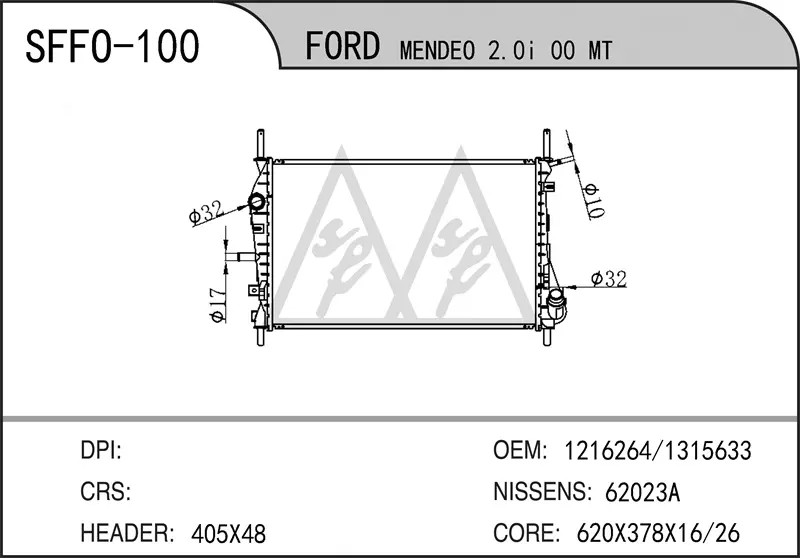In 1932, Ford Motor Company introduced the Ford Model 18, commonly known as the 1932 Ford or “Deuce.” It was a significant year for Ford as it marked the introduction of their first production V8 engine, the famous flathead V8. The 1932 Ford is highly regarded among car enthusiasts and hot rodders for its iconic design and performance capabilities. It became a popular choice for customization and is often associated with the birth of the hot rod culture in the United States.
The cooling system of a 1932 Ford typically consisted of a radiator, water pump, thermostat, and hoses. The radiator was responsible for dissipating heat from the engine coolant through its core, which was often made of copper or brass. The water pump circulated the coolant throughout the engine, helping to regulate its temperature. A thermostat controlled the flow of coolant based on the engine’s temperature, allowing it to warm up quickly and maintain optimal operating conditions. Hoses connected these components, ensuring the coolant flowed properly. It’s worth noting that specific details may vary depending on the specific model and modifications made to the vehicle over time.
How to change a radiator of 1932 Ford
Rescuing or repairing the cooling system of a 1932 Ford would involve several steps. Here’s a general outline of what you can do:
- Inspect for damage: Check the radiator, hoses, water pump, and thermostat for any signs of leaks, corrosion, or wear. Replace or repair any damaged components.
- Flush the system: Drain the coolant and flush the system to remove any debris or rust buildup. Use a radiator flush solution and follow the instructions provided.
- Radiator maintenance: Clean the radiator fins using a soft brush or compressed air to remove dirt and debris that may obstruct airflow. Ensure the radiator core is not clogged.
- Replace hoses and belts: Inspect the hoses and belts connected to the cooling system. If they are worn, cracked, or damaged, replace them with new ones to ensure proper functioning.
- Water pump inspection: Check the water pump for leaks and ensure it is functioning correctly. Replace the water pump if necessary.
- Thermostat replacement: Consider replacing the thermostat to ensure proper temperature regulation. Choose a thermostat suitable for your vehicle’s specifications.
- Coolant refill: Once all repairs and replacements are complete, refill the cooling system with the appropriate coolant mixture recommended for classic cars. Follow the manufacturer’s instructions for the correct ratio.
- Test the system: Start the engine and monitor the temperature gauge to ensure the cooling system is operating within the normal range. Check for any leaks or abnormal behavior.
Changing the radiator of a 1932 Ford requires several steps. Here’s a general outline of the process:
- Drain the coolant: Locate the drain valve or petcock at the bottom of the radiator and open it to drain the coolant into a suitable container.
- Disconnect hoses: Remove the upper and lower radiator hoses by loosening the hose clamps and sliding them off the fittings.
- Remove fan and shroud (if applicable): If your vehicle has a mechanical fan and shroud, remove them by unbolting them from the radiator.
- Disconnect transmission lines (if applicable): If your vehicle has transmission cooling lines connected to the radiator, disconnect them carefully to prevent fluid leakage.
- Remove mounting bolts: Locate the mounting bolts that secure the radiator to the frame or radiator support. Depending on the model, there may be two or four bolts to remove.
- Lift out the old radiator: Carefully lift the old radiator out of its position, ensuring you don’t damage any surrounding components.
- Install the new radiator: Place the new radiator in position, aligning the mounting holes with the frame or radiator support. Make sure it sits securely.
- Reconnect transmission lines (if applicable): If you disconnected transmission cooling lines, reattach them using the appropriate fittings and ensure they are tightly secured.
- Attach fan and shroud (if applicable): If your vehicle has a mechanical fan and shroud, reinstall them and tighten the bolts.
- Connect hoses: Slide the upper and lower radiator hoses onto their respective fittings and secure them with hose clamps. Ensure they are tight and properly seated.
- Refill with coolant: Close the drain valve or petcock and refill the radiator with the appropriate coolant mixture recommended for your vehicle.
- Check for leaks: Start the engine and let it run for a few minutes while monitoring for any coolant leaks. Inspect all connections and hoses.

Remember, this is a general guide, and the specific steps may vary depending on the exact model and modifications made to the vehicle. It’s always a good i dea to consult the vehicle’s manual or seek professional assistance if you’re unsure about any part of the process.
Post time: Aug-01-2023




